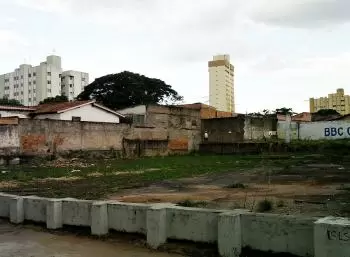
The radiological accident in Goiânia, Brazil, occurred in September 1987 and was the worst radiological accident in the history of Brazil. The accident began when two scrap dealers, Roberto dos Santos Alves and Wagner Mota Pereira, entered an old abandoned hospital in Goiânia and found a disused radiotherapy machine.
Not knowing what the machine was, they disassembled and opened the radioactive source, which contained cesium-137. Alves and Pereira were unaware of the dangers of radiation and marveled at the glowing dust that came out of the machine.
The dust, which contained high levels of cesium-137, was spread by scrap dealers and other city dwellers, resulting in the radioactive exposure of thousands of people. The cesium-137 emitted from the radioactive source had a half-life of about 30 years, which means it will remain dangerous for many years.
The accident caused the death of four people and the radioactive exposure of many more. The affected area was cordoned off and efforts were made to clean up the area and treat the affected people. The incident led to the implementation of stricter regulations in Brazil for the management and control of radioactive materials.
Causes of the Goiana nuclear accident
The causes of the Goiânia radiological accident can be attributed to several factors. One of the factors was the government's abandonment of the hospital, which allowed the radiotherapy machine to be dismantled and sold for scrap. In addition, the lack of education and awareness about the dangers of radiation on the part of scrap dealers and the local population contributed to the spread of radioactive material.
There were also lapses in the security and control of radioactive materials at the hospital, which allowed the radioactive source to be removed without authorization and in an unsafe manner.
After the accident, other factors contributing to the incident were identified, such as a lack of government oversight of medical facilities and a lack of radiation safety training for workers.
Consequences of the radiological accident in Goiana, Brazil
The consequences of the Goiânia radiological accident were devastating and long lasting. Four people died immediately after radiation exposure, and more than 200 people suffered serious exposure-related illnesses, including skin burns, gastrointestinal illnesses, and organ failure.
In addition, more than 100,000 people were tested for radiation exposure, and many had to evacuate or remain in their homes while the cleanup took place.
The accident had a significant economic impact on the city of Goiânia and on Brazil in general, as many buildings and grounds were contaminated with cesium-137 and had to be decontaminated and cleaned.
There were also social and psychological impacts, such as stigma and discrimination against crash survivors and loss of trust in government and medical facilities.
Who were the victims of the Goiania accident?
As a result of the radiological accident in Goiana, there were four deaths:
Leid das Neves Ferreira
Leid das Neves Ferreira, at the age of 6, was the daughter of Ivo Ferreira (brother of the landfill owner). Initially, when an international team arrived to treat her, she was placed in an isolated ward in the hospital, as hospital staff were afraid to be near her. She gradually developed upper body edema, hair loss, kidney and lung damage, as well as internal bleeding.
She died on October 23, 1987 of sepsis and general infection at the Marsiliu Díaz Naval Hospital in Rio de Janeiro. She was buried in a public cemetery in a special coffin made of fiberglass, designed to prevent the spread of radiation. The day of her funeral in the cemetery there were riots where more than a thousand people protested against her burial in a public cemetery.
Gabriela Maria Ferreira
Gabriela was 38 years old and was the wife of the landfill owner, Devara Ferreira. She fell ill about three days after the first contact with the substance. Her condition worsened and she developed internal bleeding, especially in the extremities, eyes and gastrointestinal tract, she suffered hair loss. She died on October 23, 1987, about a month after contact.
Israel Batista dos Santos
At the age of 22, he was a contract worker at Devara Ferreira and the first to work with a radioactive source to obtain the contents. He developed severe respiratory and pulmonary complications, was eventually sent to a hospital, and died six days later on October 27, 1987.
Edmilson Alvez de Souza
At the age of 18, he was also working at Devar Ferreira and working with a radioactive source. He developed lung damage, internal bleeding, and heart damage, but died on October 18, 1987.


